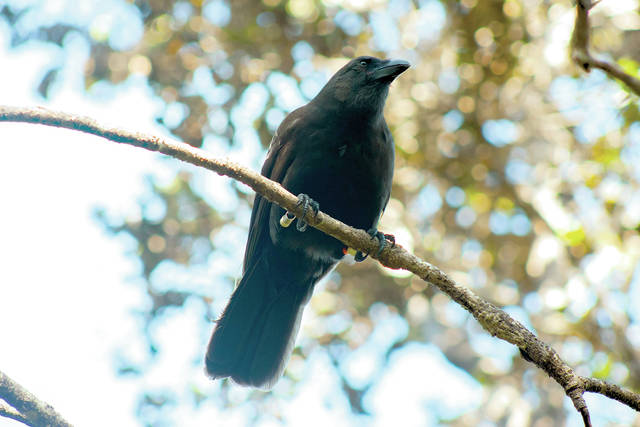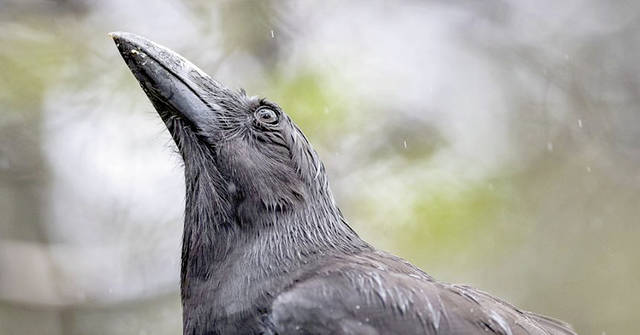HILO — A group of alala released into the wild in 2017 might produce their first offspring this year.
Since late 2017, 21 alala, or Hawaiian crows, have been released into the wild under monitoring by the Alala Project, a joint effort between the state Department of Land and Natural Resources, the U.S. Fish and Wildlife Service and San Diego Zoo Global to revitalize the critically endangered species.
Now, some of the alala released into the wild appear to be forming breeding pairs, which means they might attempt to produce offspring after spring begins.
Rachel Kingsley, education and outreach associate for the Alala Project, said the crows that are pairing are all part of the first group of 11 crows released in 2017. The crows released in 2018 have not yet developed mating behaviors.
Should the crows successfully produce and hatch eggs, they will be the first known alala to be born in the wild since the species was declared extinct in the wild in 2002.
However, Kingsley said the Alala Project has not yet determined what to do if and when the crows produce eggs. The project might let the eggs hatch in the wild or in captivity, where the hatchlings will be safer.
Although 21 alala have been released since 2017, only 19 are currently in the wild. One crow was killed by an unknown predator in late 2018, while another is currently undergoing rehabilitation after being injured by another alala.
“It seems like he is a more submissive male crow, and the other crow was defending its territory,” Kingsley said.
The Alala Project is still awaiting final necropsy results to determine the precise cause of death of the crow killed last year.
Threats to alala include feral cats, mongoose and natural predators such as the io, or Hawaiian hawk, which killed two alala in 2016, cutting short a previous attempt to reintroduce the crows into the wild.
While the alala received anti-predator conditioning before being released, Kinglsey said they are generally staying within a 1-mile radius of their original release point in the Puu Makaala Natural Area Reserve.
Kingsley said the Alala Project will gradually reduce the food provided to the birds via external feeders to encourage them to forage more.
Should the alala continue to prosper this year, the project hopes to release up to six more crows into the wild by late spring.









